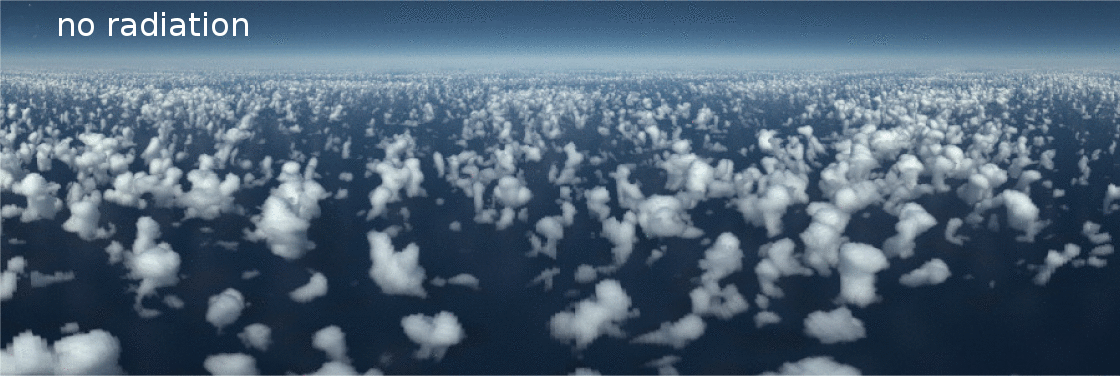Effects of thermal radiation on the development of a shallow cumulus cloud field
18.06.2017

The effects of emission and absorption of thermal radiation on cloud development were studied by Klinger et al., 2017 (ACP) with a cloud resolving model (LES). Thermal radiation causes strong local cooling at cloud tops and sides, accompanied by a modest warming at cloud bottom. Cloud side effects are generally neglected by 1-D approximations, which provide systematically smaller cooling when averaged over the model domain. In order to investigate the effects of local cooling on the clouds and to separate these local effects from a systematically different domain-average cooling, we apply the radiative transfer solutions in different ways: In addition to directly applying 3-D heating and cooling rates, horizontal averages of the 1-D and 3-D radiation are used to study local as opposed to domain-averaged effects. Finally, a simulation with prescribed constant cooling is done as a “no-radiation” reference.
Local heating and cooling affects cloud circulation, by causing stronger updrafts and subsiding shells. In addition, we find that thermal radiation triggers the organization of clouds in two different ways. First, local interactive radiation leads to the formation of cell structures and cloud clusters. Comparing the effects of 3-D and 1-D thermal radiation, we find that organization effects of 3-D local thermal radiation are usually stronger than their 1-D counterpart. Horizontally averaged radiation causes more and deeper clouds than a simulation without radiation but, in general less-organized clouds than in the local radiation simulations. Applying a constant cooling to the simulations leads to a similar development of the cloud field as in the case of averaged radiation, but less water condenses overall in the simulation. This is due to the fact that cooling is stronger in the cloud layer in the averaged and local radiation simulations, compared to the constant cooling simulation, although the average cooling in the domain is the same.
The figure shows a visualization of the cumulus cloud field after 20hrs of simulation with a) the constant cooling ("no radiation", averaged 3D radiation, and local 3D thermal radiation.

